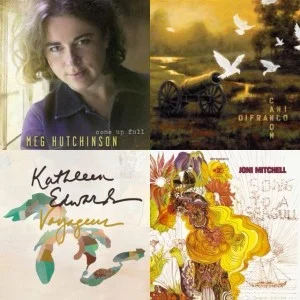The Secret to Making Love Last By Marissa Stapley
/A few summers ago, while out for a canoe ride with my mom at the same cottage that inspired part of the setting of my debut novel, Mating for Life, my mom said something to me that I have never forgotten. I had just had an argument with my husband that morning. The fight was nothing too major: our kids were quite young at the time; we were often tired; I know I sometimes got resentful of the fact that he seemed to be able to sleep through any and all night-wakings while I, even on vacation, ended up bleary eyed and tired in the mornings, groping blindly for coffee and fantasizing about napping.
But still, this resentment was worrying me. Even back then, even before I had written a novel like Mating for Life – which shines a spotlight on the ins and outs of relationships, as well as the sometimes harsh reality of bonds that are meant to last for life – I recognized resentment as the enemy of love. A recently divorced friend had told me he was sure resentment (of late nights working, of interrupted sleep because of young children, of household chores unfairly distributed, of guy’s golf weekends or girl’s spa weekends, of anything, really) was what spelled the beginning of the end of his marriage. As I confided in my mom about the unrest between my husband and me that morning, I told her that I resented him – and that it scared me. I said, “I always envisioned us staying together forever but … What if it doesn’t work out? I’m sure you thought you’d stay with dad when you married him, but you two ended up breaking up. What if that’s my destiny, too?”
She stopped paddling and our canoe glided across the still water. And she said to me, “The difference is that the two of you work on your relationship a lot harder than your father and I did. We just gave up. Probably before we needed to.”
She went on to explain the difference in our generations: that my dad and her – who are still close friends, even after divorcing – were a lot younger when they married than most couples are today. That their parents were of a generation that, generally, did not get divorces, and that, in some ways, the idea of being able to dissolve a marriage was seen as a new type of freedom, a result of the liberation of the ‘60s. Except, she said, no one realized quite how painful it was all going to be. And also, no one considered the fact that trading one relationship for another wasn’t going to solve the challenges that long-term relationships posed. What many people learned was that making a relationship, any relationship, last forever was hard work, no matter who you ended up with in the end. (And sometimes, you didn’t end up with anyone. Sometimes, you ended up counting on your friends or your family, instead of a spouse.)
My husband and I made up, of course. And over the course of the next few years, I began to resent the amount of work our relationship required less and less. I looked around and noticed that our friends were working at their relationships, too, and that those who were heading for divorce court were doing so only after much counselling and deliberation. I started to create the characters in Mating for Life, characters whose tales were very much about the realities of long term love in all its forms, and characters who were connected to each other in profound ways, just as I believe we all are. My novel certainly does not present a rose-coloured view of any type of relationship, but I do think it presents an honest look – and sometimes, being honest about our relationships is one of the most important ways to sustain them.
As I mentioned, my parents are still friends. They “consciously uncoupled” long before Gwyneth Paltrow and Chris Martin made it fashionable to do so. Ultimately, they’re still in a lifelong relationship of sorts, as co-parents of my brother and I and as friends with each other. Perhaps my mom is right, and they could have tried harder—or perhaps they just weren’t meant to be married. Because if there’s one thing I’ve learned from living my life and writing a book like Mating for Life it’s that love is rarely simple, and that loving anyone – spouse, sibling, parent, child, friend – can present some of the most significant challenges in life. But love can also present the greatest rewards.
So what’s the secret to making love last? Sisters Ilsa and Liane have a very important conversation in Mating for Life that I think reveals this very thing:
“Here’s the thing about love. It can last, but you have to be careful with it. You have to treat it like it’s your most precious possession, you have to never, ever take it, or the person you love, for granted. Even just doing it once could spell the beginning of the end. Resentment, it’s love’s worst enemy. Don’t forget that, Liane, okay? Don’t forget that, and you’ll be fine.”
This is an excerpt from the book that has been quoted by many fans and reviewers. But I’ve always thought this second part of the conversation is important, too—the part about the what if? (What if it doesn’t work out? What if this relationship isn’t my destiny?)
“And also, don’t be afraid. Helen said something to me once about the pain of love leaving behind a beautiful memory. Even if something doesn’t work, maybe you don’t have to let it scar you. Maybe it can be something other than a scar, something that makes you stronger.”
Our relationships sustain us. They’re important. We should always try our hardest at them. But we will not always succeed. That’s just reality – and, as the characters in Mating for Life learn, it’s nothing to be ashamed of.
Bio
Marissa Stapley is a writer and former magazine editor who contributes to Elle, The Globe and Mail and The National Post, among others. She also teaches writing at the University of Toronto and editing at Centennial College. She lives in Toronto with her husband and two young children–and she has the same birthday L.M. Montgomery.
















































